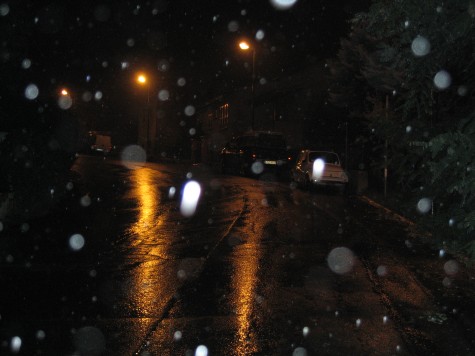 Black can be described by the absence of color, and the absence of light. Black objects absorb every spectrum of light, diametrically opposed to the reflective action of white. Black and white-simple, spare, and elegant. Black and light? Though our summer light lasts long into the evening, the night landscape is well worth some thought. A dark and rainy landscape can be visually challenging, and beautifully moody.
Black can be described by the absence of color, and the absence of light. Black objects absorb every spectrum of light, diametrically opposed to the reflective action of white. Black and white-simple, spare, and elegant. Black and light? Though our summer light lasts long into the evening, the night landscape is well worth some thought. A dark and rainy landscape can be visually challenging, and beautifully moody.
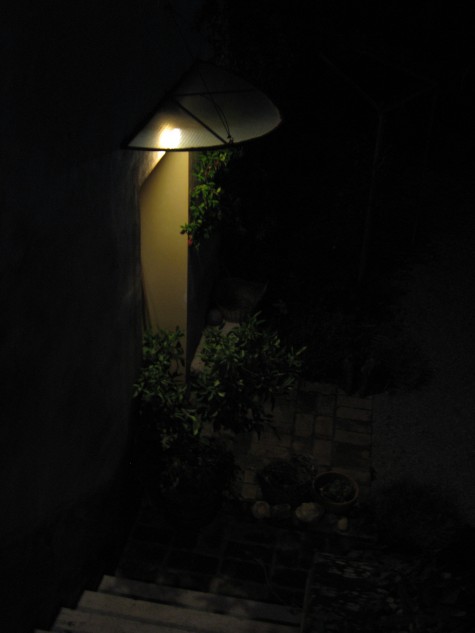 Black Baccara roses, Queen of the Night Tulips, and chocolate cosmos are not really black-they are dark versions of red or purple. Salix melanostachys, or black pussy willow, has branches that approach black. But true black in the landscape is about shadow-light and dark. The relationship of light and shadow in the landscape is a visual story that gets play every day, regardless of the season, or the time of day.
Black Baccara roses, Queen of the Night Tulips, and chocolate cosmos are not really black-they are dark versions of red or purple. Salix melanostachys, or black pussy willow, has branches that approach black. But true black in the landscape is about shadow-light and dark. The relationship of light and shadow in the landscape is a visual story that gets play every day, regardless of the season, or the time of day.
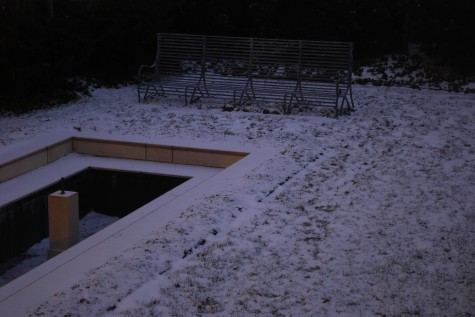
I took this picture last night after it got dark. Focusing the lens was not so easy; I was guessing. I fully expected to take a picture of the black. My camera actually recorded the landscape with what little light was available via a very long exposure. Living in the city where I do, it is never completely dark. But what interested me more was how the landscape read almost colorless-but for the cream fountain stone, whose vertical surface was lit by the warm light from the street. My yews had indeed gone black, partly by way of contrast to the snow.
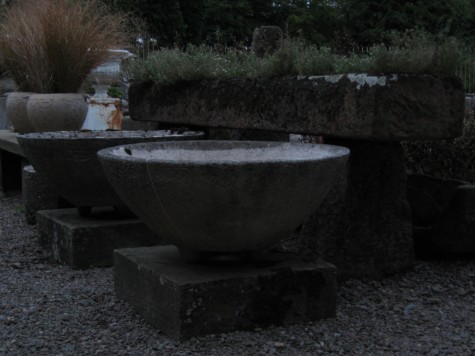 Low light reduces contrast, but none the less the white painted urn in this picture reads white, and the shadows cast by the stone cistern read black. Where am I going with this? Depending on the degree of shade, certain spots in a garden may also be described as voids. Contrasting something with nothing-this is part of composing. Like the silence after a thunderclap, black in a garden is a place for your eye to rest, and regroup.
Low light reduces contrast, but none the less the white painted urn in this picture reads white, and the shadows cast by the stone cistern read black. Where am I going with this? Depending on the degree of shade, certain spots in a garden may also be described as voids. Contrasting something with nothing-this is part of composing. Like the silence after a thunderclap, black in a garden is a place for your eye to rest, and regroup.
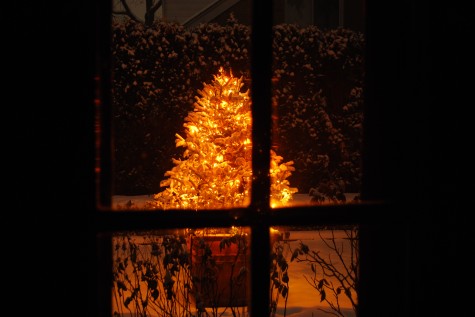 The only reason I am able to see anything of my side garden on a winter night is courtesy of the lights on this tree. Landscape lighting is easy to dislike. Rarely do I see it done in a subtle way; lots of times I see theatrical versions that might be fun on first glance, but tiresome over time. I like my theatre on stage, or my glitz and glam at a hotel where my visit is entertainingly brief. Thus I like strings of lights in the garden-lots in some places and a little in others-even after the holidays.
The only reason I am able to see anything of my side garden on a winter night is courtesy of the lights on this tree. Landscape lighting is easy to dislike. Rarely do I see it done in a subtle way; lots of times I see theatrical versions that might be fun on first glance, but tiresome over time. I like my theatre on stage, or my glitz and glam at a hotel where my visit is entertainingly brief. Thus I like strings of lights in the garden-lots in some places and a little in others-even after the holidays.
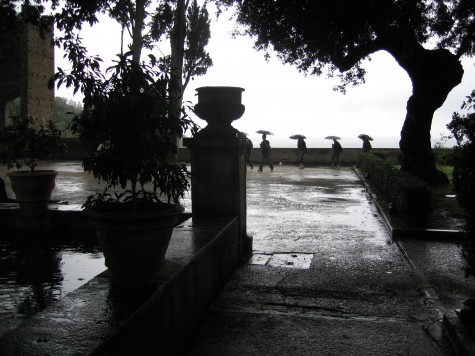 Any part of a landscape that is strongly backlit will throw the unlit side of every shape black. Both natural and man made forms in silhouette are striking. Composing and layering a space effectively can read in a very powerful way on a dark day. Though it sounds odd to say so, the sky is an important part of any landscape composition.
Any part of a landscape that is strongly backlit will throw the unlit side of every shape black. Both natural and man made forms in silhouette are striking. Composing and layering a space effectively can read in a very powerful way on a dark day. Though it sounds odd to say so, the sky is an important part of any landscape composition.
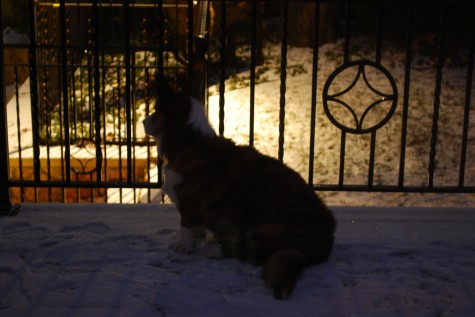
Iron in a garden shines in a backlit space. My side garden is enclosed by arborvitae, but it is fenced on the inside of the arbs with ordinary black chain link fencing. I did not want any fencing visible from the street side. Though the arbs are beginning to grow through the fence, that black is not so noticeable even now. Dark colors do not attract attention in a garden; black demands even less from your eye. I reserved the ironwork for places where I wanted to see it, and see through it.
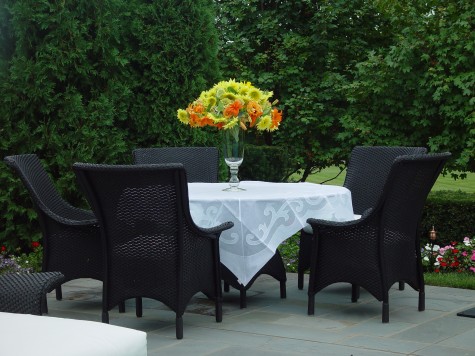 This black garden furniture is formally elegant. The lower shapes of the chairs read well against the light grey blue of the stone terrace. The tops of the chairs appear much more subtle against their dark green background. The interior leaves and needles of the trees actually appear much more black than the chairs to my eye. The texture of the embroidered white tablecloth is highlighted by the black table underneath.
This black garden furniture is formally elegant. The lower shapes of the chairs read well against the light grey blue of the stone terrace. The tops of the chairs appear much more subtle against their dark green background. The interior leaves and needles of the trees actually appear much more black than the chairs to my eye. The texture of the embroidered white tablecloth is highlighted by the black table underneath.
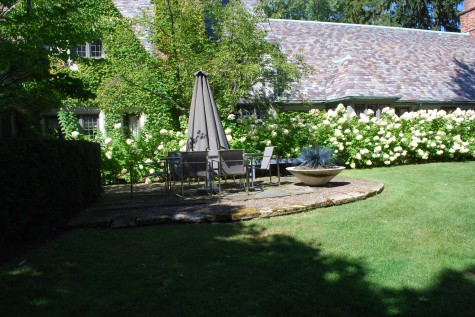
The yews in this photograph look black, and the lawn nearly black-even on a sunny July day. The relationship of light and dark in a garden is always there, and ready to be seen. Studying the relationship of black to white, and dark to light in your landscape-what better time than now?
Leave a Comment